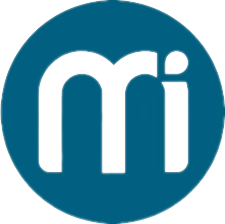The Role of a Virtual Medical Receptionist in Modern Healthcare

In today’s evolving healthcare environment, efficiency, accuracy, and accessibility are critical for patient satisfaction and practice growth. One of the biggest challenges for clinics and medical offices is managing patient communication, scheduling, and front-office tasks without overwhelming in-house staff. This is where a Virtual Medical Receptionist comes in — providing streamlined solutions that save time and resources while improving patient care. These professionals work remotely yet seamlessly integrate into daily operations. At the same time, practices are discovering the broader benefits of hiring a skilled Healthcare Assistant to handle a range of administrative responsibilities.
Understanding the Role of a Virtual Medical Receptionist
A virtual medical receptionist is a trained professional who works remotely to manage core administrative and patient-facing tasks. They use secure technology to connect with your practice’s systems and patients, ensuring operations run smoothly. From answering calls to scheduling appointments, their role mirrors that of a traditional receptionist — only with greater flexibility and cost efficiency.
Key responsibilities typically include:
-
Managing patient inquiries via phone, email, or chat
-
Scheduling and rescheduling appointments
-
Verifying insurance details and updating patient records
-
Coordinating with physicians and staff
-
Sending appointment reminders to reduce no-shows
-
Handling billing-related communications
This service ensures patients always have access to a responsive front desk without the overhead of hiring a full-time, in-house receptionist.
Why Healthcare Practices Need Virtual Reception Services
The demand for virtual receptionists is growing as practices face staffing shortages, rising administrative costs, and increasing patient expectations. Patients want quick responses and easy access, while providers need to maintain accurate records and efficient scheduling.
A virtual medical receptionist bridges this gap by:
-
Reducing patient wait times
-
Improving call handling capacity
-
Allowing in-office staff to focus on clinical duties
-
Ensuring 24/7 coverage in some cases
For smaller practices especially, outsourcing reception tasks is more affordable and scalable than hiring and training on-site staff.
Benefits of a Virtual Medical Receptionist
Hiring a virtual receptionist offers numerous advantages for healthcare providers. Some of the most impactful include:
-
Cost Savings – No overhead costs for office space, benefits, or training.
-
Scalability – Services can expand as your patient volume grows.
-
Improved Patient Experience – Patients receive prompt, professional communication.
-
Operational Efficiency – Streamlined scheduling and reduced administrative errors.
-
HIPAA Compliance – Most virtual services follow strict security standards.
This modern approach ensures both providers and patients benefit from smoother processes and reliable support.
Technology Behind Virtual Reception
Modern virtual receptionists rely on cloud-based platforms, secure VoIP systems, and practice management software integration. This allows them to seamlessly log patient interactions, access medical records securely, and synchronize schedules with providers in real time.
As telehealth and digital care expand, the ability of a virtual receptionist to support hybrid practices becomes increasingly important.
How a Virtual Medical Receptionist Improves Patient Engagement
Patient engagement is no longer just about medical treatment — it begins the moment a patient contacts a clinic. A responsive, professional receptionist sets the tone for the patient’s experience. Virtual receptionists ensure:
-
Every call is answered without long hold times
-
Appointment reminders reduce no-shows and cancellations
-
Patients feel valued and supported
This leads to stronger patient-provider relationships and higher retention rates.
Comparing Traditional Receptionists and Virtual Receptionists
While traditional in-office receptionists provide face-to-face interaction, virtual receptionists deliver flexibility and cost-efficiency. Many practices find that combining the two creates a balance — with in-office staff handling walk-ins and virtual staff managing digital communications and overflow calls.
The Growing Role of Healthcare Assistants
Beyond virtual reception, medical practices are increasingly utilizing Healthcare Assistants for broader support. These assistants handle a variety of roles, including patient data management, billing, transcription, and follow-up communication. Integrating both virtual receptionists and healthcare assistants can help a practice achieve full-scale operational support without overburdening clinical staff.
Choosing the Right Virtual Medical Receptionist Service
When selecting a virtual receptionist provider, healthcare organizations should consider:
-
Experience in healthcare and knowledge of medical terminology
-
HIPAA compliance and data security protocols
-
Flexibility in scheduling (after-hours, weekends, overflow calls)
-
Integration with existing practice management systems
-
Transparent pricing and scalability
Future of Virtual Reception in Healthcare
The future of healthcare administration is virtual. As technology advances, AI-powered tools, chatbots, and digital assistants will continue to enhance human-led virtual reception services. This hybrid model will offer even greater efficiency while keeping the human touch that patients value.
FAQs About Virtual Medical Receptionists
Q1: Are virtual medical receptionists HIPAA compliant?
Yes, most professional services ensure HIPAA compliance to protect patient data. Always confirm compliance before hiring.
Q2: Can a virtual receptionist manage multiple providers in one practice?
Absolutely. They are trained to handle multi-provider scheduling and communication seamlessly.
Q3: How do patients know they are speaking with a virtual receptionist?
Patients typically won’t notice, as virtual receptionists present themselves as part of your practice’s front desk.
Q4: What kind of technology do I need to work with a virtual receptionist?
Most services only require cloud-based access to your scheduling software and secure communication channels.
Q5: Can virtual medical receptionists work after hours?
Yes, many services offer extended or 24/7 coverage to meet patient needs.
Q6: Is a virtual receptionist suitable for small practices?
Yes. In fact, small and mid-sized practices benefit the most due to cost savings and increased efficiency.
- Art
- Causes
- Crafts
- Dance
- Drinks
- Film
- Fitness
- Food
- Games
- Gardening
- Health
- Home
- Literature
- Music
- Networking
- Other
- Party
- Religion
- Shopping
- Sports
- Theater
- Wellness


